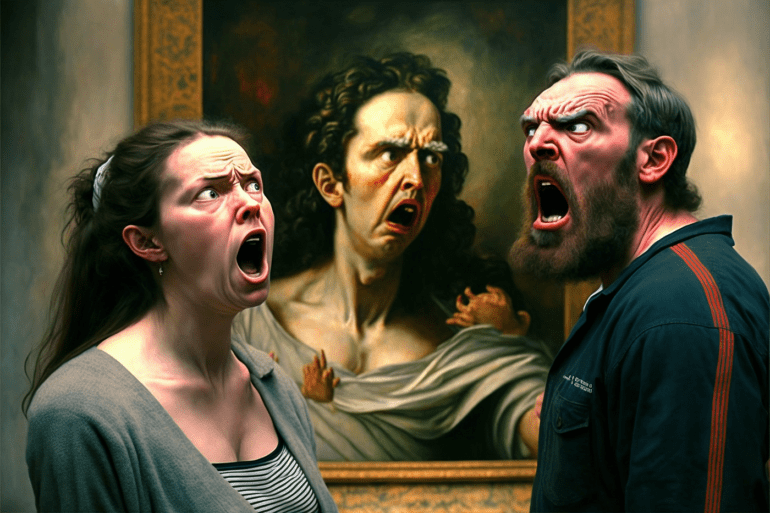TL;DR:
- People can perceive emotions and intentions in AI-generated art.
- The study challenges the notion that only human-made art elicits strong emotional responses.
- Researchers from the University of Vienna conducted experiments on abstract art.
- Results show that both computer-generated and human-made art evoke emotions and intentionality.
- However, human-made art still receives more positive reviews, even when mislabeled as computer-generated.
- Implications for the evolving human-computer interaction in the art market.
Main AI News:
In a recent study that sheds light on the evolving landscape of the art world, researchers from the University of Vienna collaborated with the Humboldt University of Berlin to explore the intriguing realm of AI-generated art. The findings reveal a fascinating twist – people can perceive emotions and intentions in art, even when they know it was created by a computer. This discovery challenges conventional wisdom and paves the way for a deeper exploration of the dynamic between human-made and AI-generated art.
Traditionally, human-made artworks have held the upper hand in evoking strong emotional responses from viewers. However, this study suggests that both types of art possess emotional depth, opening the door to further investigation into the intricate dynamics of human-AI art interactions.
Artificial intelligence (AI) has been steadily gaining prominence in the art world, with AI-generated artworks commanding astonishing prices at auctions. Artists are now routinely incorporating algorithms into their creative processes. Yet, the question remained: Can AI-generated art truly connect with people on an emotional level?
Led by Theresa Demmer, the research team conducted experiments involving abstract black-and-white artworks. They presented participants with these creations, revealing that some were randomly generated by a computer, while others were intentionally crafted by humans to evoke emotions.
Interestingly, the computer-generated images were not produced using advanced AI or self-learning algorithms trained on human-generated art. Instead, a deliberately simple algorithm was employed, ensuring the utmost independence from human influence. This approach aimed to eliminate human bias entirely.
Before viewing each artwork, participants were informed whether it was created by a computer or a human – with this information being accurate in only half of the cases. Subsequently, participants rated the artworks based on various dimensions. They were also asked to articulate the emotions they personally felt while viewing the art, the emotions they believed the art aimed to elicit in viewers, and the emotions they assumed the artists experienced during the creation process.
The results yielded intriguing insights. Participants consistently reported experiencing emotions and perceiving some level of intentionality in both computer-generated and human-made art. This discovery challenges preconceived notions and showcases the ability of AI-generated art to resonate emotionally with audiences.
However, there remained a notable distinction. Participants reported stronger emotions and more positive ratings for art that had genuinely been created by humans – even when they were given inaccurate information suggesting otherwise. This subtle yet significant disparity in emotional impact underscores the unique characteristics inherent to human-made art.
The implications of this study reverberate through the realm of human-computer interaction, raising questions about the expanding role of AI as a creative entity in art, design, and entertainment. Future research endeavors will delve deeper into the complexities of how humans respond to more intricate AI-generated artworks and the discernible characteristics that distinguish computer-generated art from its human counterpart, if any.
Conclusion:
The study indicates that AI-generated art has the capacity to evoke emotions and intentionality in viewers, challenging the traditional belief that only human-made art can achieve this. While this opens new avenues for AI in the art world, the subtle preference for human-made art suggests that unique qualities in human creativity still hold sway. This dynamic presents opportunities and challenges for the evolving art market, where AI-generated art is gaining traction and reshaping the boundaries of creativity and emotional connection.

